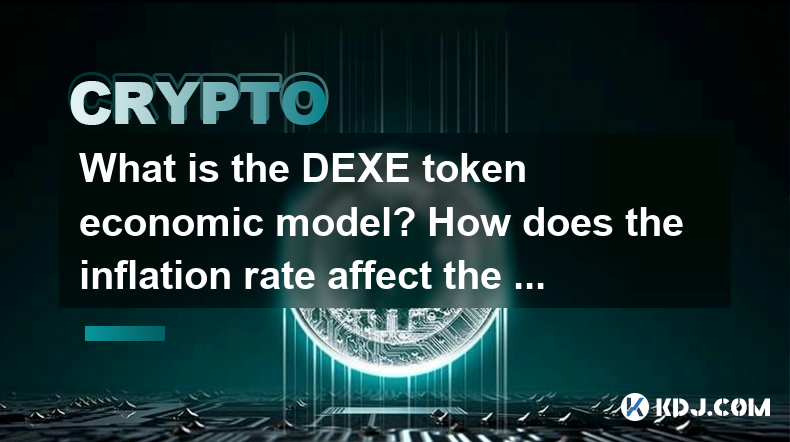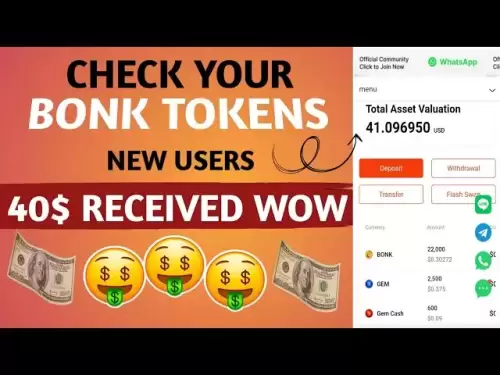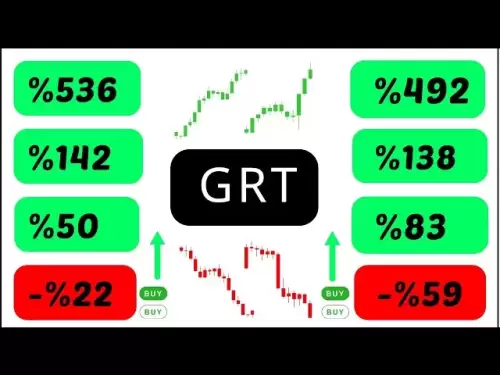-
 Bitcoin
Bitcoin $107,467.9126
1.26% -
 Ethereum
Ethereum $2,447.5288
-0.12% -
 Tether USDt
Tether USDt $1.0005
0.00% -
 XRP
XRP $2.1921
0.13% -
 BNB
BNB $647.2897
0.50% -
 Solana
Solana $144.8627
-0.37% -
 USDC
USDC $0.9996
-0.03% -
 TRON
TRON $0.2732
0.10% -
 Dogecoin
Dogecoin $0.1652
-0.18% -
 Cardano
Cardano $0.5700
-2.87% -
 Hyperliquid
Hyperliquid $37.0274
-1.81% -
 Bitcoin Cash
Bitcoin Cash $484.6957
0.19% -
 Sui
Sui $2.7354
-2.19% -
 Chainlink
Chainlink $13.1727
-1.49% -
 UNUS SED LEO
UNUS SED LEO $8.9978
-0.04% -
 Stellar
Stellar $0.2421
-2.33% -
 Avalanche
Avalanche $17.5633
-3.51% -
 Toncoin
Toncoin $2.8476
-1.94% -
 Shiba Inu
Shiba Inu $0.0...01166
-0.56% -
 Litecoin
Litecoin $85.1071
0.09% -
 Hedera
Hedera $0.1502
-2.96% -
 Monero
Monero $310.2774
-1.64% -
 Dai
Dai $0.9999
-0.01% -
 Polkadot
Polkadot $3.3584
-1.88% -
 Ethena USDe
Ethena USDe $1.0003
-0.04% -
 Bitget Token
Bitget Token $4.4443
2.90% -
 Pi
Pi $0.6242
14.04% -
 Uniswap
Uniswap $6.9774
-2.86% -
 Pepe
Pepe $0.0...09535
-5.05% -
 Aave
Aave $256.7574
-3.35%
What is the DEXE token economic model? How does the inflation rate affect the price?
The DEXE token, with a total supply of 100 million, has a 2% annual inflation rate to reward stakers and fund ecosystem growth, balancing supply and demand dynamics.
May 06, 2025 at 09:07 am

The DEXE token is an integral part of the DEXE platform, a decentralized exchange ecosystem that aims to provide users with a seamless and efficient trading experience. Understanding the economic model of the DEXE token is crucial for investors and users alike, as it directly impacts the token's value and utility. This article delves into the DEXE token economic model, examining its key components and how the inflation rate influences its price.
Token Supply and Distribution
The DEXE token has a total supply of 100 million tokens. The distribution of these tokens is strategically planned to ensure the long-term sustainability and growth of the platform. The initial distribution is as follows:
- 30% allocated to the team and advisors, vested over a period of 2 years to align their interests with the project's success.
- 20% reserved for the ecosystem development fund, used to incentivize developers and partners to build on the DEXE platform.
- 25% allocated to public sale, allowing early adopters and investors to participate in the project.
- 15% set aside for marketing and community-building efforts, ensuring the platform's visibility and user engagement.
- 10% dedicated to the liquidity pool, providing initial liquidity for the token on decentralized exchanges.
This distribution model aims to balance the interests of different stakeholders while fostering a vibrant ecosystem around the DEXE platform.
Token Utility and Incentives
The DEXE token serves multiple purposes within the ecosystem, enhancing its utility and driving demand. Key utilities include:
- Governance: DEXE token holders can participate in the platform's governance, voting on proposals that shape the future direction of the project.
- Staking: Users can stake their DEXE tokens to earn rewards, incentivizing long-term holding and contributing to the platform's security.
- Transaction Fees: DEXE tokens can be used to pay for transaction fees on the platform, providing a practical use case and increasing demand.
- Liquidity Provision: Token holders can provide liquidity to the platform's pools, earning a portion of the trading fees generated.
These utilities create a robust demand for the DEXE token, as users and investors seek to leverage its various benefits within the ecosystem.
Inflation Rate and Token Economics
The inflation rate of the DEXE token is a critical factor that influences its price dynamics. The DEXE platform implements a fixed annual inflation rate of 2%, which is distributed to stakers as rewards. This inflation rate is designed to strike a balance between incentivizing participation and maintaining the token's value over time.
The impact of the inflation rate on the DEXE token's price can be understood through the following mechanisms:
- Supply Increase: The annual 2% inflation rate results in an increase in the total supply of DEXE tokens. If demand remains constant, this could lead to a decrease in the token's price due to the increased supply.
- Staking Rewards: The inflation rate is used to reward stakers, which can encourage more users to hold and stake their tokens. This increased demand from stakers can offset the inflationary pressure on the token's price.
- Ecosystem Growth: The additional tokens generated through inflation are used to fund ecosystem development, which can lead to increased adoption and demand for the DEXE token, potentially counteracting the negative effects of inflation on price.
Market Dynamics and Price Sensitivity
The DEXE token's price is also influenced by broader market dynamics and investor sentiment. Factors such as overall market trends, regulatory developments, and the performance of competing projects can all impact the token's price. The sensitivity of the DEXE token's price to these factors is influenced by its economic model and inflation rate.
- Market Sentiment: Positive news and developments within the DEXE ecosystem can boost investor confidence, leading to increased demand and a higher token price. Conversely, negative sentiment can lead to sell-offs and price declines.
- Competitive Landscape: The performance of other decentralized exchange platforms and their native tokens can influence the DEXE token's price. If competing projects gain traction, it may lead to a shift in investor interest away from DEXE.
- Regulatory Environment: Changes in regulations affecting decentralized exchanges and cryptocurrencies can significantly impact the DEXE token's price. Favorable regulatory developments can increase investor confidence, while unfavorable ones can lead to price volatility.
Long-Term Sustainability and Token Value
The long-term sustainability of the DEXE token's value is closely tied to the platform's ability to grow its user base, increase trading volume, and enhance its ecosystem. The economic model, including the inflation rate, plays a crucial role in supporting these goals.
- User Growth: As more users join the DEXE platform and engage with its features, the demand for the DEXE token is likely to increase, supporting its price.
- Trading Volume: Higher trading volumes on the DEXE platform can lead to increased revenue from transaction fees, which can be used to further develop the ecosystem and reward token holders.
- Ecosystem Development: The allocation of tokens to the ecosystem development fund and the use of inflation to incentivize developers can lead to the creation of new features and applications, enhancing the platform's value proposition and driving demand for the DEXE token.
Frequently Asked Questions
Q: How does the DEXE token's staking mechanism work, and what are the benefits for stakers?
A: Staking DEXE tokens involves locking them in the platform's staking contract to support the network's security and operations. Stakers are rewarded with a portion of the annual 2% inflation rate, providing them with a passive income stream. Additionally, staking can enhance governance rights, allowing stakers to have a greater say in the platform's development.
Q: What measures does the DEXE platform take to mitigate the negative effects of inflation on the token's price?
A: The DEXE platform mitigates the negative effects of inflation through several strategies. Firstly, the inflation rate is used to reward stakers, encouraging long-term holding and reducing the circulating supply. Secondly, the additional tokens generated are allocated to ecosystem development, which can lead to increased demand and adoption. Lastly, the platform continuously works to enhance its features and user experience, driving organic growth and demand for the DEXE token.
Q: How does the DEXE token's governance model function, and what role do token holders play?
A: The DEXE token's governance model is based on a decentralized voting system, where token holders can propose and vote on changes to the platform. Token holders can submit proposals for new features, improvements, or changes to the economic model. Voting power is proportional to the number of DEXE tokens held, ensuring that those with a greater stake in the platform have a stronger voice in its direction.
Q: What are the potential risks associated with the DEXE token's economic model, particularly regarding inflation?
A: One potential risk associated with the DEXE token's economic model is the impact of inflation on the token's purchasing power over time. If the inflation rate outpaces the growth in demand, it could lead to a gradual decrease in the token's value. Additionally, if the ecosystem development funded by inflation does not lead to significant growth and adoption, the increased supply could negatively affect the token's price. Investors should carefully consider these risks when evaluating the DEXE token's long-term potential.
Disclaimer:info@kdj.com
The information provided is not trading advice. kdj.com does not assume any responsibility for any investments made based on the information provided in this article. Cryptocurrencies are highly volatile and it is highly recommended that you invest with caution after thorough research!
If you believe that the content used on this website infringes your copyright, please contact us immediately (info@kdj.com) and we will delete it promptly.
- Meme Coins, Crypto Influencers, and Investment: Riding the Wave in 2025
- 2025-06-26 10:25:13
- NoviqTech, HYDI, and Carbon Credits: A Partnership Driving Sustainable Solutions
- 2025-06-26 10:25:13
- Pi Coin Price Prediction: June 26 - Will It Break $0.70?
- 2025-06-26 09:05:13
- Tokenization Takes Flight: Cross-Border Transactions Soar to New Heights
- 2025-06-26 08:30:12
- Midnight Airdrop: NIGHT Tokens and the Cardano-XRP Connection
- 2025-06-26 08:50:13
- DRML Miner & USDC: Cloud Mining Revolution in '25
- 2025-06-26 09:05:13
Related knowledge

How to customize USDT TRC20 mining fees? Flexible adjustment tutorial
Jun 13,2025 at 01:42am
Understanding USDT TRC20 Mining FeesMining fees on the TRON (TRC20) network are essential for processing transactions. Unlike Bitcoin or Ethereum, where miners directly validate transactions, TRON uses a delegated proof-of-stake (DPoS) mechanism. However, users still need to pay bandwidth and energy fees, which are collectively referred to as 'mining fe...

USDT TRC20 transaction is stuck? Solution summary
Jun 14,2025 at 11:15pm
Understanding USDT TRC20 TransactionsWhen users mention that a USDT TRC20 transaction is stuck, they typically refer to a situation where the transfer of Tether (USDT) on the TRON blockchain has not been confirmed for an extended period. This issue may arise due to various reasons such as network congestion, insufficient transaction fees, or wallet-rela...

How to cancel USDT TRC20 unconfirmed transactions? Operation guide
Jun 13,2025 at 11:01pm
Understanding USDT TRC20 Unconfirmed TransactionsWhen dealing with USDT TRC20 transactions, it’s crucial to understand what an unconfirmed transaction means. An unconfirmed transaction is one that has been broadcasted to the blockchain network but hasn’t yet been included in a block. This typically occurs due to low transaction fees or network congestio...

How to check USDT TRC20 balance? Introduction to multiple query methods
Jun 21,2025 at 02:42am
Understanding USDT TRC20 and Its ImportanceUSDT (Tether) is one of the most widely used stablecoins in the cryptocurrency market. It exists on multiple blockchain networks, including TRC20, which operates on the Tron (TRX) network. Checking your USDT TRC20 balance accurately is crucial for users who hold or transact with this asset. Whether you're sendi...

What to do if USDT TRC20 transfers are congested? Speed up trading skills
Jun 13,2025 at 09:56am
Understanding USDT TRC20 Transfer CongestionWhen transferring USDT TRC20, users may occasionally experience delays or congestion. This typically occurs due to network overload on the TRON blockchain, which hosts the TRC20 version of Tether. Unlike the ERC20 variant (which runs on Ethereum), TRC20 transactions are generally faster and cheaper, but during...

The relationship between USDT TRC20 and TRON chain: technical background analysis
Jun 12,2025 at 01:28pm
What is USDT TRC20?USDT TRC20 refers to the Tether (USDT) token issued on the TRON blockchain using the TRC-20 standard. Unlike the more commonly known ERC-20 version of USDT (which runs on Ethereum), the TRC-20 variant leverages the TRON network's infrastructure for faster and cheaper transactions. The emergence of this version came as part of Tether’s...

How to customize USDT TRC20 mining fees? Flexible adjustment tutorial
Jun 13,2025 at 01:42am
Understanding USDT TRC20 Mining FeesMining fees on the TRON (TRC20) network are essential for processing transactions. Unlike Bitcoin or Ethereum, where miners directly validate transactions, TRON uses a delegated proof-of-stake (DPoS) mechanism. However, users still need to pay bandwidth and energy fees, which are collectively referred to as 'mining fe...

USDT TRC20 transaction is stuck? Solution summary
Jun 14,2025 at 11:15pm
Understanding USDT TRC20 TransactionsWhen users mention that a USDT TRC20 transaction is stuck, they typically refer to a situation where the transfer of Tether (USDT) on the TRON blockchain has not been confirmed for an extended period. This issue may arise due to various reasons such as network congestion, insufficient transaction fees, or wallet-rela...

How to cancel USDT TRC20 unconfirmed transactions? Operation guide
Jun 13,2025 at 11:01pm
Understanding USDT TRC20 Unconfirmed TransactionsWhen dealing with USDT TRC20 transactions, it’s crucial to understand what an unconfirmed transaction means. An unconfirmed transaction is one that has been broadcasted to the blockchain network but hasn’t yet been included in a block. This typically occurs due to low transaction fees or network congestio...

How to check USDT TRC20 balance? Introduction to multiple query methods
Jun 21,2025 at 02:42am
Understanding USDT TRC20 and Its ImportanceUSDT (Tether) is one of the most widely used stablecoins in the cryptocurrency market. It exists on multiple blockchain networks, including TRC20, which operates on the Tron (TRX) network. Checking your USDT TRC20 balance accurately is crucial for users who hold or transact with this asset. Whether you're sendi...

What to do if USDT TRC20 transfers are congested? Speed up trading skills
Jun 13,2025 at 09:56am
Understanding USDT TRC20 Transfer CongestionWhen transferring USDT TRC20, users may occasionally experience delays or congestion. This typically occurs due to network overload on the TRON blockchain, which hosts the TRC20 version of Tether. Unlike the ERC20 variant (which runs on Ethereum), TRC20 transactions are generally faster and cheaper, but during...

The relationship between USDT TRC20 and TRON chain: technical background analysis
Jun 12,2025 at 01:28pm
What is USDT TRC20?USDT TRC20 refers to the Tether (USDT) token issued on the TRON blockchain using the TRC-20 standard. Unlike the more commonly known ERC-20 version of USDT (which runs on Ethereum), the TRC-20 variant leverages the TRON network's infrastructure for faster and cheaper transactions. The emergence of this version came as part of Tether’s...
See all articles
























































































